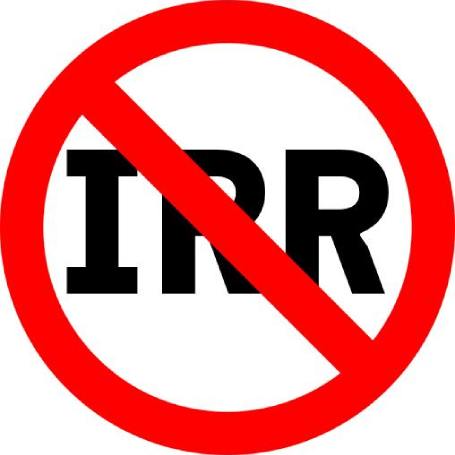IRR versus ROI
July 3, 2023
Let me net it out. Internal Rate of Return (IRR) is not a measure of the Return on Investment (ROI). If it were ROI, it would be called ROI. It’s not. IRR has nothing to do with measuring the return on a project but rather is related to the NPV calculation. Some folks see the word “return” in IRR and think it must be a measure of value. Unfortunately, value isn’t what it measures and if used to assess a project’s viability, it is more likely to lead you astray.
So, what is IRR?
IRR is the interest rate that sets the Net Present Value (NPV) stream to zero. Now that is a useful number but only when used carefully. If the IRR of a project is greater than the cost of capital the project will deliver a positive NPV. If the IRR is less than the cost of capital the project will deliver a negative NPV. Interesting, but ultimately it doesn’t tell you the return of the project, only whether there will be more of less money left at ethe end of the project. Worse, a high IRR doesn’t mean the project delivers more money than a low IRR.
Really?
Let’s say I calculate a 100% IRR for a project. Is that good? You probably guessed that’s a trick question or I wouldn’t be using it. Let’s look at two examples that have a 10-year lifespan. In both cases you make an initial investment of $100 and get all your money in that investment 10 years later. Sort of like a 10-year certificate of deposit in a bank.
Example 1 IRR=100%
The initial investment in the project is $100 and 10 years later the project returns $100,000. At the end of 10 years, you get a check for $100,100. That’s an average return of $10,000 per year or 1000% annual ROI. That’s a very nice investment.
Example 2 IRR=100%
The initial investment in the project is $100. At the end of the first year, it pays $200 while at the end of the 10th year it pays as additional $10. At the end of 10 years, you get a check for $310. The project averaged $21 annually for a 21% ROI on that 100% investment. Okay, that’s not too bad but not as good as the first project.
The problem with IRR is that it’s not designed to assess project value. Built into the calculation is a reinvestment rate at the same rate as the IRR. Early payments with long project horizons significantly skew the results upward. Worse, an unscrupulous person can make very subtle changes to the assumptions and generate a great IRR for a terrible project.
If you want more on the subject take a look at the Wikipedia article on MIRR. But when it comes to calculating the value of an investment, stick with ROI and say no to IRR.